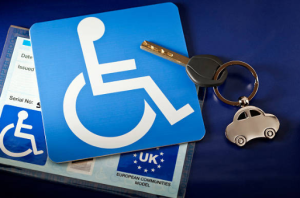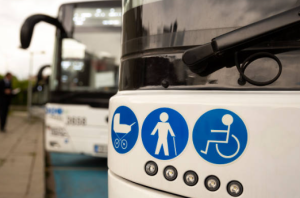Preparation is key for handling unexpected vehicle issues, including situations that involve individuals with specific needs. In this guide, we’ll walk you through the necessary steps to ensure you’re well-equipped to handle unexpected challenges on the road. Always keep an emergency kit in your vehicle with essentials like a spare tire, jack, jumper cables, and a flashlight. For those seeking assistance related to mobility, resources like “free cars for disabled” programs can provide valuable support.
Preparation For Handling A Disabled Vehicle
When it comes to handling a disabled vehicle, there are two key points you need to keep in mind. First, make sure you gather all the necessary tools and supplies before you start. This includes items like a spare tire, jack, and jumper cables.

Second, take the time to learn the proper techniques for handling a disabled vehicle, such as how to safely change a tire or jumpstart a battery. By being prepared and knowledgeable, you can handle any situation that comes your way.
Gather Necessary Tools And Supplies
Before your journey, ensure you have essential tools and supplies for handling disabled vehicles. Carry a tire jack, spare tire, jumper cables, and a basic toolkit for minor repairs. Don’t forget a flashlight with extra batteries, reflective vest, and warning triangle for safety. Keep emergency supplies like a first aid kit, water, snacks, and a blanket on hand. Being prepared can save you from unexpected roadside challenges.
Learn The Techniques For Handling A Disabled Vehicle
To manage a disabled vehicle effectively, follow these key steps: First, safely steer to the side of the road, signaling your intent and avoiding sudden movements. Turn on hazard lights for visibility. Second, park safely, engage the parking brake, and use wheel chocks to prevent movement. These steps ensure safety while dealing with a disabled vehicle.
Related links: Understanding The Legal Framework And Rights For Disabled Parking
Procedures For Handling A Disabled Vehicle
When handling a disabled vehicle, the first step is to assess the situation. Take a moment to evaluate the problem and determine if it’s something you can fix yourself or if you’ll need assistance.

Next, it’s crucial to take safety precautions. Make sure to turn on your hazard lights, set up warning triangles or flares, and if possible, move the vehicle to a safe location away from traffic.
Lastly, if it’s safe to do so, move the vehicle off the roadway to avoid causing further delays or hazards for other drivers.
Assess The Situation
First, take a moment to assess the situation and determine the best course of action for handling a disabled vehicle.
When faced with a disabled vehicle, it’s important to evaluate the immediate surroundings and potential hazards. Are you on a busy highway or a quiet residential street? Are you obstructing traffic or posing a danger to yourself and others?
By assessing the situation, you can make an informed decision on how to proceed.
Take Safety Precautions
Ensure that you prioritize your safety and that of others by taking appropriate safety precautions in the event of a disabled vehicle.
The first step is to move your vehicle to a safe location, if possible.
If you can safely steer your disabled vehicle to the side of the road or onto the shoulder, do so immediately.
This will help prevent any accidents or further damage to your vehicle.
Remember to turn on your hazard lights to alert other drivers of your situation.
Move The Vehicle
To prioritize your safety and that of others, it’s important to promptly relocate your vehicle to a safe location in the event of a breakdown. Once you realize that your vehicle is disabled, make sure to turn on your hazard lights immediately to alert other drivers of your situation.
Types Of Disabled Vehicles
If you find yourself dealing with a disabled vehicle, it’s important to familiarize yourself with the different types of issues you encounter.

The most common types of disabled vehicles include those with a flat tire, a dead battery, or engine troubles.
Knowing how to handle each of these situations can help you stay calm and efficiently resolve the problem.
Flat Tire
Dealing with a flat tire can be incredibly frustrating, leaving you stranded on the side of the road with a sinking feeling of helplessness. with the right knowledge and tools, you can handle this situation like a pro.
The first step is to find a safe spot to pull over, away from traffic. Make sure to turn on your hazard lights to alert other drivers of your situation. Once you’ve stopped, engage your parking brake to secure your vehicle in place.
Next, you’ll need to gather the necessary tools and equipment to change your flat tire. These include a spare tire, jack, lug wrench, and flashlight. It’s important to know where these items are located in your vehicle beforehand, so you don’t waste time searching for them in the moment.
Dead Battery
When your battery dies, you feel frustrated and stranded, but don’t worry, there are steps you can take to get back on the road.
The first thing you can try is jump-starting your car. Find another vehicle with a working battery and park it close to yours. Connect the positive jumper cable to the positive terminal of the dead battery, and then connect the other end of the positive cable to the positive terminal of the working battery.
Engine Troubles
To troubleshoot engine problems, you can start by checking for any unusual noises or smells coming from under the hood of your car. If you hear any grinding, knocking, or whining sounds, it could indicate a serious issue with your engine.
Similarly, if you notice a burning smell or see smoke, it’s crucial to address the problem immediately. In such cases, it’s recommended to turn off your engine and seek professional help. Ignoring these warning signs can lead to further damage and leave you stranded on the side of the road.
Recommended Reads: Accessible Vehicle Options For Individuals With Disabilities
Conclusion
In conclusion, effective handling of disabled vehicles requires preparation, calmness, and adherence to specific procedures outlined in this guide. Always have essential tools ready, like a spare tire and jumper cables. Familiarize yourself with procedures for various issues. Prioritize safety, watch for passing traffic, and follow these guidelines to handle disabled vehicles confidently and safely on the road.
